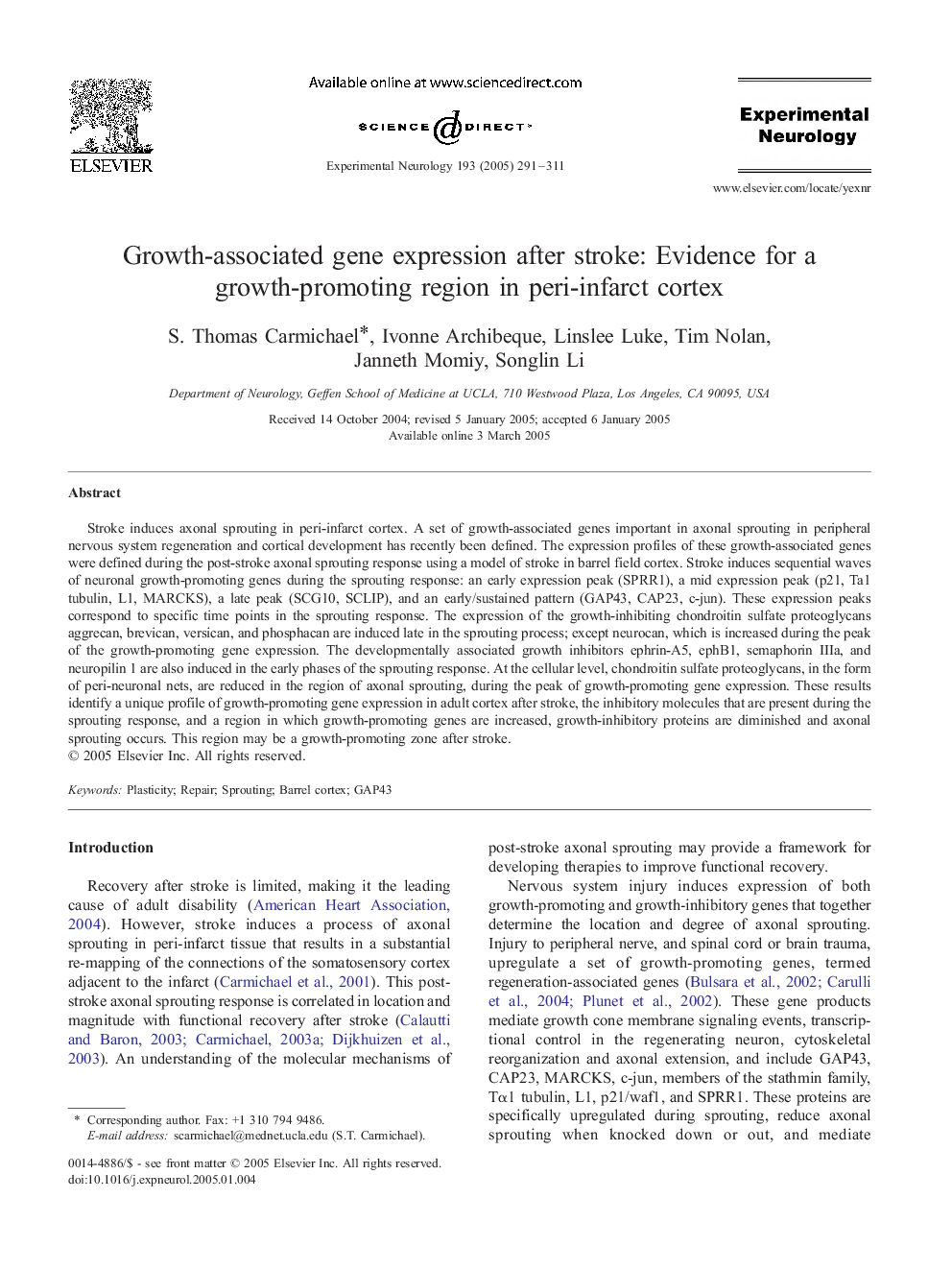| Article ID | Journal | Published Year | Pages | File Type |
|---|---|---|---|---|
| 9191874 | Experimental Neurology | 2005 | 21 Pages |
Abstract
Stroke induces axonal sprouting in peri-infarct cortex. A set of growth-associated genes important in axonal sprouting in peripheral nervous system regeneration and cortical development has recently been defined. The expression profiles of these growth-associated genes were defined during the post-stroke axonal sprouting response using a model of stroke in barrel field cortex. Stroke induces sequential waves of neuronal growth-promoting genes during the sprouting response: an early expression peak (SPRR1), a mid expression peak (p21, Ta1 tubulin, L1, MARCKS), a late peak (SCG10, SCLIP), and an early/sustained pattern (GAP43, CAP23, c-jun). These expression peaks correspond to specific time points in the sprouting response. The expression of the growth-inhibiting chondroitin sulfate proteoglycans aggrecan, brevican, versican, and phosphacan are induced late in the sprouting process; except neurocan, which is increased during the peak of the growth-promoting gene expression. The developmentally associated growth inhibitors ephrin-A5, ephB1, semaphorin IIIa, and neuropilin 1 are also induced in the early phases of the sprouting response. At the cellular level, chondroitin sulfate proteoglycans, in the form of peri-neuronal nets, are reduced in the region of axonal sprouting, during the peak of growth-promoting gene expression. These results identify a unique profile of growth-promoting gene expression in adult cortex after stroke, the inhibitory molecules that are present during the sprouting response, and a region in which growth-promoting genes are increased, growth-inhibitory proteins are diminished and axonal sprouting occurs. This region may be a growth-promoting zone after stroke.
Related Topics
Life Sciences
Neuroscience
Neurology
Authors
S. Thomas Carmichael, Ivonne Archibeque, Linslee Luke, Tim Nolan, Janneth Momiy, Songlin Li,
